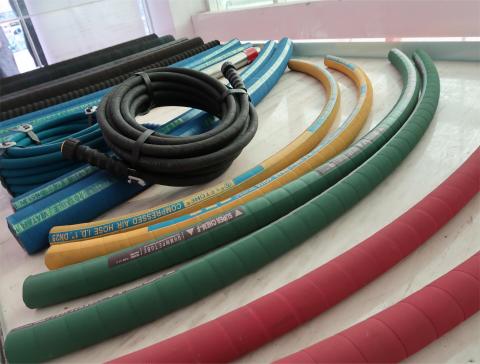With the development of industry and technological progress, the materials of rubber hoses are also constantly evolving. From natural rubber to various synthetic rubbers, the emergence of each new material is aimed at meeting more demanding working conditions and performance requirements. This article will explore the evolution process of rubber hose materials from traditional rubber to EPDM (ethylene propylene diene monomer), and analyze the advantages of EPDM rubber hoses.
1、 Early development of rubber hose materials
The Origin of Natural Rubber
Natural rubber is extracted from rubber trees and has been widely used in the manufacturing of waterproof fabrics, raincoats, footwear, and hoses since the 19th century.
Natural rubber has good elasticity and wear resistance, but is prone to aging and decomposition in high temperature and oily environments.
The emergence of early synthetic rubber
In order to overcome the limitations of natural rubber, scientists began developing synthetic rubbers such as nitrile rubber (NBR) and chloroprene rubber (Neoprene).
These synthetic rubbers exhibit excellent resistance to oil and chemical corrosion, but there is still a problem of insufficient high-temperature resistance.
2、 Characteristics and applications of EPDM rubber hoses
Chemical composition of EPDM rubber
EPDM is a ternary copolymer of ethylene, propylene, and a small amount of non conjugated diene, which has excellent weather resistance, heat resistance, ozone resistance, and electrical insulation performance.
EPDM rubber can be used over a wider temperature range, from extremely low temperatures to high temperatures up to 150 ° C.
Application scope of EPDM rubber hoses
Due to its excellent temperature and chemical resistance, EPDM rubber hoses are widely used in the automotive industry (such as cooling and air conditioning systems), industry (such as hot water and steam delivery), and construction industry (such as heating systems).
3、 Advantages of EPDM rubber hoses compared to traditional rubber hoses
Durability and reliability
EPDM rubber hoses can maintain long-term flexibility and elasticity in harsh environments, and are less prone to cracking and hardening, thereby improving the stability and safety of the entire system.
Reduction of maintenance costs
Due to the longer service life and better chemical resistance of EPDM rubber hoses, they reduce replacement frequency and maintenance costs, saving users long-term operating expenses.
Environmental Protection and Sustainability
EPDM rubber hoses support green technology and sustainable development because they can be produced using recycled materials and are easier to recycle at the end of their lifespan.
conclusion
The evolution of rubber hose materials from traditional natural and early synthetic rubber to modern EPDM rubber reflects the industrial demand for more efficient and durable materials. EPDM rubber hoses have become the preferred material in many application fields due to their excellent temperature resistance, chemical resistance, and overall performance. With the continuous advancement of technology, it is expected that EPDM rubber hoses will continue to demonstrate their unique advantages in new application areas, and more innovative materials will also emerge to meet the challenges of future industry.

